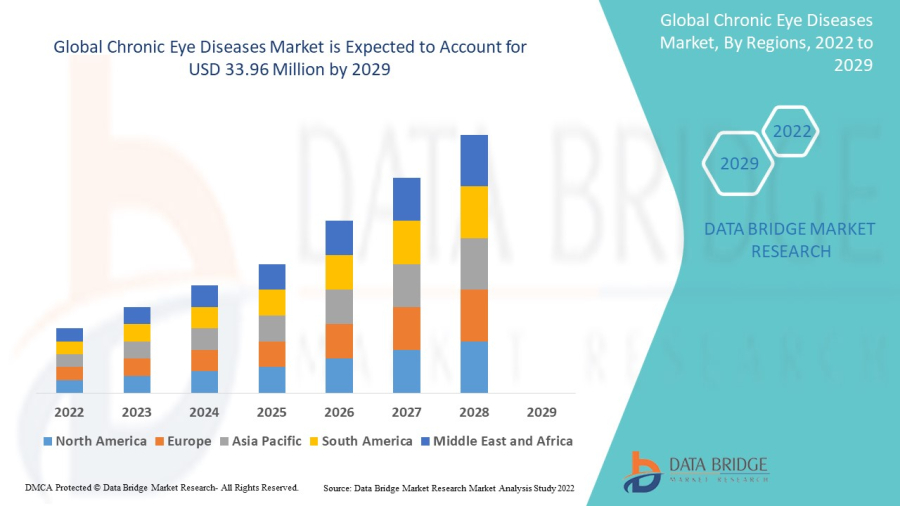Introduction
Chronic eye diseases are a major health concern globally, affecting millions of people and significantly impacting quality of life. Understanding the risk factors associated with these conditions is crucial for prevention and early intervention. The key risk factors for some of the most common chronic eye diseases, including age-related macular degeneration (AMD), glaucoma, diabetic retinopathy, and cataracts.
Definition
Numerous variables, including as bacterial, fungal, and allergy infections; tissue dryness from using contact lenses too often; frequent rubbing of the eyes and eye makeup; and genetic and metabolic processes are some of the causes of chronic eye illnesses. In addition to dryness, oedema, watery eyes, impaired vision, redness, and soreness, patients with eye conditions may also have other symptoms.
Age
Age is a significant risk factor for many chronic eye diseases. As people age, the structures within the eye undergo changes that can lead to conditions such as AMD, glaucoma, and cataracts.
- Age-Related Macular Degeneration (AMD): AMD is most prevalent in individuals over the age of 60. The risk increases with each passing decade, particularly after age 50.
- Glaucoma: The likelihood of developing glaucoma increases after age 40, with a more substantial risk after age 60.
- Cataracts: The formation of cataracts is closely linked with aging, and by age 80, more than half of Americans either have a cataract or have undergone cataract surgery.
Genetics
Family history and genetic predisposition play a crucial role in the risk of developing chronic eye diseases.
- AMD: Those with a family history of AMD have a significantly higher risk. Specific genetic variations have been identified that increase susceptibility to the disease.
- Glaucoma: Glaucoma is more likely to occur in families where the disorder has a history. Glaucoma has been associated with many types of genetic alterations.
- Diabetic Retinopathy: Genetics can influence the risk of developing diabetes, which in turn increases the risk of diabetic retinopathy.
Ethnicity
Ethnic background can influence the likelihood of developing certain eye diseases.
- Glaucoma: In comparison to Caucasians, African Americans have a higher risk of acquiring glaucoma, and when they do, it usually manifests more severely and at an earlier age.
- AMD: Caucasians have a higher risk of developing AMD compared to other ethnic groups.
- Diabetic Retinopathy: Hispanic and African American populations have a higher prevalence of diabetes, increasing their risk for diabetic retinopathy.
Lifestyle Factors
Several lifestyle choices significantly impact the risk of chronic eye diseases.
- Smoking: Smoking is a major risk factor for AMD and cataracts. AMD is twice to three times as common in smokers than in non-smokers. Smoking also doubles the risk of forming cataracts.
- Diet: Poor nutrition, particularly diets lacking in antioxidants, omega-3 fatty acids, and certain vitamins, can increase the risk of AMD and cataracts. A diet high in sugars and unhealthy fats can contribute to the development of diabetes, leading to diabetic retinopathy.
- Physical Activity: A sedentary lifestyle increases the risk of conditions such as diabetes and hypertension, which can lead to diabetic retinopathy and other eye problems.
Medical Conditions
Pre-existing medical conditions can significantly increase the risk of chronic eye diseases.
- Diabetes: Diabetes is a leading cause of diabetic retinopathy. High blood sugar levels damage the blood vessels in the retina, leading to vision problems and potentially blindness if not managed properly.
- Hypertension: High blood pressure can damage the blood vessels in the eyes, increasing the risk of glaucoma and diabetic retinopathy.
- Cardiovascular Diseases: Conditions that affect the cardiovascular system can also impact eye health, contributing to the development of AMD and other eye diseases.
Prevention and Management
Understanding these risk factors is essential for the prevention and early detection of chronic eye diseases. The following are some methods to lower the risk and efficiently manage eye health:
Regular Eye Exams: Routine eye examinations are critical for detecting early signs of chronic eye diseases.It is possible to intervene promptly and improve management with early detection.
Healthy Lifestyle: Adopting a healthy lifestyle, including a balanced diet rich in antioxidants, vitamins, and omega-3 fatty acids, can support eye health. Quitting smoking and engaging in regular physical activity also reduce the risk of chronic eye diseases.
Protective Eyewear: Wearing sunglasses that block UV rays and using protective eyewear in hazardous environments can prevent eye damage.
Managing Medical Conditions: Proper management of diabetes, hypertension, and other medical conditions is essential for reducing the risk of related eye diseases. Regular check-ups with healthcare providers and adhering to prescribed treatments are crucial.
Family History Awareness: Being aware of family history and discussing it with an eye care professional can help identify individuals at higher risk. In certain circumstances, genetic counselling and testing might be advised.
Medications and Treatments: For those already diagnosed with chronic eye diseases, following prescribed treatments and medications is vital. Regular follow-ups with an eye care specialist ensure that the condition is managed effectively and any progression is monitored.
Growth Rate of Chronic Eye Diseases Market
According to Data Bridge Market Research, the market for chronic eye diseases was estimated to be worth USD 20.828 million in 2021 and is projected to grow at a compound annual growth rate (CAGR) of 6.30% from 2022 to 2029, when it is predicted to reach USD 33.96 million.
Conclusion
Chronic eye diseases pose a significant threat to vision and overall quality of life. Understanding the various risk factors, including age, genetics, ethnicity, lifestyle choices, medical conditions, environmental factors, and ocular factors, is crucial for prevention and early intervention. By adopting a proactive approach to eye health, individuals can reduce their risk and maintain better vision throughout their lives. Regular eye exams, a healthy lifestyle, protective measures, and proper management of existing medical conditions are key strategies for preserving eye health and preventing chronic eye diseases.

